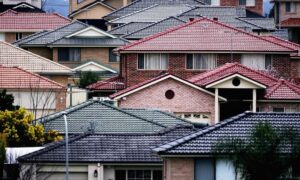Why the Colour of Your Roof Matters
Getting light-coloured roofs would cut your electricity costs in warmer weather or cities because the colour of your roof can reduce indoor temperatures, according to an urban studies Prof. Sebastian Pfautschat, from Western Sydney University.After five years of documenting heat in western Sydney, he warns that dark-coloured roofs can reach higher temperatures than lighter roofs, increasing the internal temperature of a home by up to six degrees (42.8°F) in the summer. “You will need 50 percent higher energy costs to actually cool your home down to about 26°C (78.8°F),” he told 2GB. However, the majority of people are still opting for darker colours without knowing that it’s hurting their wallets. “I would estimate that about 90 percent have dark grey, black, even dark blue roofs out west,” he said. “People would just go to these new suburbs, and they see only dark roofs, and then they think, well, that’s the way you live out here, and they opt for the dark roof as well.” He said that even when you have a light-coloured roof, the darker roofs in your neighbourhood can also impact the temperature inside your home. “It still reduces it, but ambient temperature around your home still remains higher than it should be by nearly two degrees,” Pfautsch said. “So if we would all have light-coloured roofs, we can bring down summer air temperatures by nearly two degrees celsius. That can be a big difference when you get through a 40-degree day which suddenly becomes only 38 degrees.” This was also proven by a modelling study by the University of New South Wales led by professor of architecture Mattheos Santamouris, who said that dark-coloured roofs in surrounding buildings, schools and apartment buildings, can turn Sydney’s west which already surpasses 50 degrees in the summer even hotter. “Western Sydney is especially at risk of urban overheating; the households are more likely to either spend more on cooling or are forced to endure heat-related stress indoors. It’s a very serious problem,” Santamouris said. Obstacles to Adopting Light-Coloured Roofs However, there are many factors that prevent this change from occurring, including councils that don’t allow light-coloured roofs because of glare or not blending into the colour palette that they want to preserve. “If you have someone living below you, you don’t want to have their roof reflecting light into your balcony or in your house,” Pfautsch said. For people with dark roofs on their existing homes, reflective coatings can be a cost-effective solution. “You can do that just by applying a reflective coating to your roof, which is supposed to last about 20 years,” he said. “That’s about a payoff of an investment in three years.” “So there’s really a fundamental change that needs to happen. It would be great to see regulation coming into our building codes like we have in other countries where it’s mandatory to go for reflective roofs in residential buildings.” Follow Jessie Zhang is a reporter based in Sydney covering Australian news, focusing on health and environment. Contact her at [email protected].

Getting light-coloured roofs would cut your electricity costs in warmer weather or cities because the colour of your roof can reduce indoor temperatures, according to an urban studies Prof. Sebastian Pfautschat, from Western Sydney University.
After five years of documenting heat in western Sydney, he warns that dark-coloured roofs can reach higher temperatures than lighter roofs, increasing the internal temperature of a home by up to six degrees (42.8°F) in the summer.
“You will need 50 percent higher energy costs to actually cool your home down to about 26°C (78.8°F),” he told 2GB.
However, the majority of people are still opting for darker colours without knowing that it’s hurting their wallets.
“I would estimate that about 90 percent have dark grey, black, even dark blue roofs out west,” he said.
“People would just go to these new suburbs, and they see only dark roofs, and then they think, well, that’s the way you live out here, and they opt for the dark roof as well.”
He said that even when you have a light-coloured roof, the darker roofs in your neighbourhood can also impact the temperature inside your home.
“It still reduces it, but ambient temperature around your home still remains higher than it should be by nearly two degrees,” Pfautsch said.
“So if we would all have light-coloured roofs, we can bring down summer air temperatures by nearly two degrees celsius. That can be a big difference when you get through a 40-degree day which suddenly becomes only 38 degrees.”
This was also proven by a modelling study by the University of New South Wales led by professor of architecture Mattheos Santamouris, who said that dark-coloured roofs in surrounding buildings, schools and apartment buildings, can turn Sydney’s west which already surpasses 50 degrees in the summer even hotter.
“Western Sydney is especially at risk of urban overheating; the households are more likely to either spend more on cooling or are forced to endure heat-related stress indoors. It’s a very serious problem,” Santamouris said.
Obstacles to Adopting Light-Coloured Roofs
However, there are many factors that prevent this change from occurring, including councils that don’t allow light-coloured roofs because of glare or not blending into the colour palette that they want to preserve.
“If you have someone living below you, you don’t want to have their roof reflecting light into your balcony or in your house,” Pfautsch said.
For people with dark roofs on their existing homes, reflective coatings can be a cost-effective solution.
“You can do that just by applying a reflective coating to your roof, which is supposed to last about 20 years,” he said.
“That’s about a payoff of an investment in three years.”
“So there’s really a fundamental change that needs to happen. It would be great to see regulation coming into our building codes like we have in other countries where it’s mandatory to go for reflective roofs in residential buildings.”












